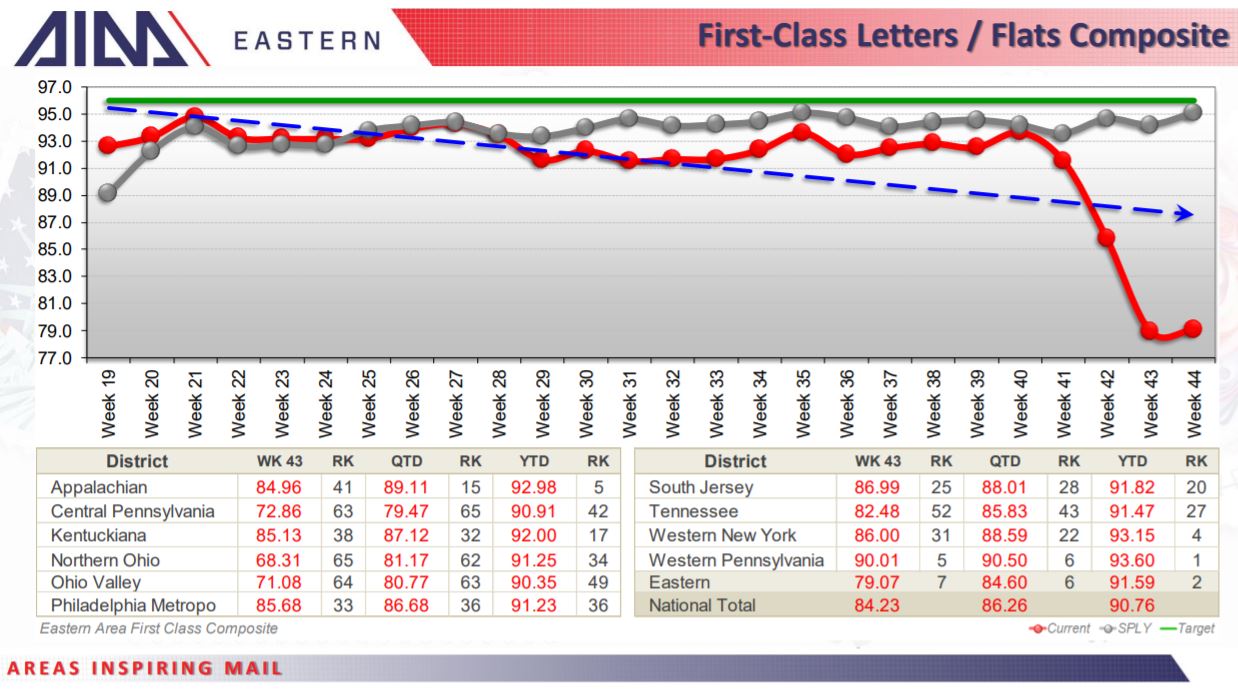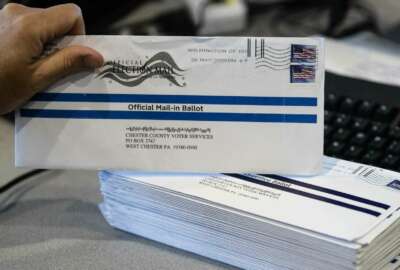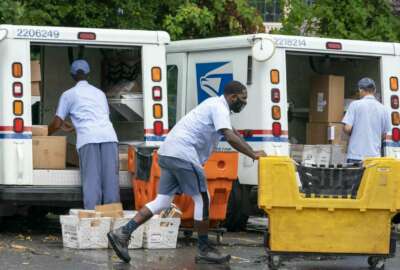

Postmaster General Louis DeJoy says USPS would seek “more pricing freedom” from Congress, as well as legislation that would reform the agency’s mandate to...
The Postal Service is drafting an “ambitious plan” for the agency to cut costs out of its delivery network after November’s election, Postmaster General Louis DeJoy told lawmakers on Friday.
In addition, DeJoy told members of the Senate Homeland Security and Governmental Affairs that USPS would seek “more pricing freedom” from the regulatory agency that sets postal rates and legislation from Congress to reform the agency’s mandate to pre-fund retiree health benefits.
The Postal Service, he added, also supports congressional efforts to give the agency emergency funding that would help reimburse USPS for costs incurred during the coronavirus pandemic.
While the pandemic contributed to some delays in mail delivery, DeJoy said USPS continued to deliver mail six days a week — a service standard he said the agency would keep intact even as it considers where else it can reduce spending.
“This organization continued to perform — and it’s why we’ve had such high ratings — while our revenues were down. Other organizations would have stopped going into some of these rural areas,” DeJoy said.

The House will vote Saturday on a bill that would give the Postal Service $25 billion for operational costs, despite pushback from the Trump administration.
The Delivering for America Act would also prohibit USPS from cutting post-office hours, decommissioning mail-sorting equipment or reducing delivery standards at least until January, and up through “the last day of the COVID-19 public health emergency.”
But with “no help in sight” from lawmakers to address the Postal Service’s long-term financial problems, DeJoy said the Postal Service will continue to look at ways to cut costs from its delivery network, or else it will run out of cash.
While the Postal Service has enough cash to keep operating at least through August 2021, DeJoy said any notion from Congress that the agency can keep its current business model going in the long-term is “outrageous thinking.”
“It is really a farce to believe that we can sit here and do nothing,” DeJoy said.
He also urged the Postal Regulatory Service to ease up on strict price caps on mail products that USPS has a monopoly on. The PRC ruled three years ago that the current rate-setting system doesn’t meet standards to keep the USPS financially healthy, but it has yet to provide an alternative pricing system.
DeJoy said the obvious choice for the Postal Service to cut costs within its control was to reduce late and extra delivery trips between mail processing facilities and local post offices, as well as getting letter carriers to start and end their deliver routes on time.
DeJoy said the Postal Service oversees 40,000 trips a day between processing facilities and post offices, and that 12% of those trips have been late, costing the agency up to $4 billion annually.
“FedEx, UPS – everybody runs their trucks on time. That’s what glues the whole network together, our collection process to our delivery process. That was not my schedule,” he said.
DeJoy told senators that keeping these deliveries on time would save $2-3 billion a year, and would also lead to more on-time mail delivery. However, the Postal Service’s own data shared with its business customers has shown a sharp decline recently in on-time delivery.
“Unfortunately, our production processing within the plants was not fully aligned with this established schedule. We had some delays in the mail, and our recovery process should have been a few days and it’s amounted to be a few weeks,” DeJoy said.
Amid these cuts to transportation costs, DeJoy said the Postal Service will continue to allow overtime where needed, and that the agency has spent $700 million on overtime since he took office in June.
Unlike some of his predecessors, DeJoy said he doesn’t support changing the agency’s mandate to deliver mail to every U.S. address six days a week. The proposal to cut mail delivery to five days a week has received bipartisan pushback from Congress, and DeJoy said current USPS delivery standards contribute the USPS ranking as the most popular federal agency.
“I think the six-day delivery, the connection that the postal letter carrier has with the American people, that gives us this highly trusted brand. And where the economy is going in the future, I think that is probably our biggest strength to capitalize on,” DeJoy said.
The Postal Service has postponed plans to remove additional mail-sorting equipment from its processing network until after this November’s election, but DeJoy assured senators that the agency has the capacity to deliver a surge in mail-ballots.
Even if every American voted by mail this year, DeJoy said the approximately 330 million ballots would only account for 75% of what the agency delivers in a day.
— U.S. Postal Service (@USPS) August 21, 2020
The Postal Service has launched an election mail website, expanded its election mail task force to include union representatives and DeJoy said the agency will deliver all election mail under first-class delivery standards — even for states that pay a lower commercial mail rate for election mail.
“We will deploy processes and procedures that advance any election mail, in some cases ahead of first-class mail,” he said.
However, he said still urged households to return their ballots well ahead of state and local deadlines.
“The general word around here is vote early,” DeJoy said.
Before postponing further operational changes, the USPS in May planned to remove up to 20% of its mail-sorting equipment from its network. Meanwhile, the USPS inspector general has repeatedly warned that the agency hasn’t cut processing costs “at a rate consistent with the decline in mail volume.”
However, former USPS Board of Governors Vice President David Williams, who resigned in April, told members of the Congressional Progressive Caucus in an ad-hoc hearing that planned cuts to mail-sorting equipment would thin out the agency’s ability to redirect mail in the event of a major disaster or during the current pandemic.
“There were a couple of very odd aspects to this pullback. One is that you don’t save money by breaking down machines and putting them away and storing them. You spend money,” Williams said Thursday.
Sen. Maggie Hassan (D-N.H.) said a processing and distribution facility in Manchester, New Hampshire recently removed four mail-sorting machines, with only one machine still in operation. Of the four decommissioned machines, three are still sitting in the facility, and one has been sold for scrap metal.
“If that machine fails, like it did yesterday when I was talking to postal workers in my state, sorting stops and mail is delayed until the machine is fixed,” Hassan said.
Copyright © 2024 Federal News Network. All rights reserved. This website is not intended for users located within the European Economic Area.
Jory Heckman is a reporter at Federal News Network covering U.S. Postal Service, IRS, big data and technology issues.
Follow @jheckmanWFED



